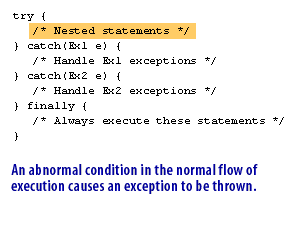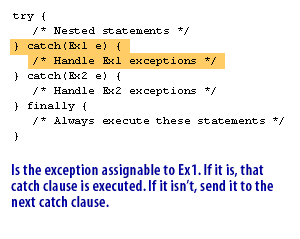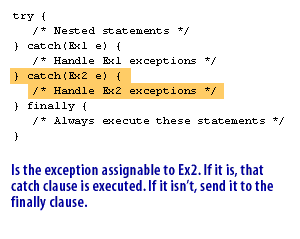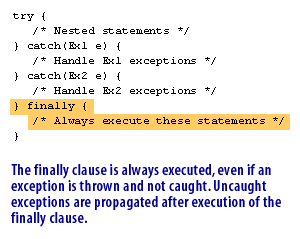| Lesson 7 | The try-catch Statement |
| Objective | Describe how Exceptions are caught |
try-catch statement in Java
Exceptions are caught using the
try-catch statement. The try part of the statement surrounds the statements for which exceptions are to be caught, and the catch part identifies the exception class that is caught and how the exception is to be processed. Multiple catch clauses may be used. An optional finally clause identifies processing that is to be performed whether or not an exception is thrown or caught.
Only one finally clause may be used. The catch clause declares a variable that identifies the type of exceptions that it catches. The type of this variable may be any class that extends Throwable.
The catch clause catches any exceptions that are subclasses of this type.
If multiple catch clauses are supplied, the first matching catch clause is executed. Subsequent catch clauses are ignored. The finally clause identifies code that is to be executed after the catch clause (if any) or the try statement.
Java try-catch Statement




Java Virtual Machine
Java - try catch - statement
Multiple
try-catch statements may be nested within each other. The nested try-catch statement is contained in the try clause of the try-catch statement in which it is nested.
try catch - Quiz
Click the Quiz link below to check your understanding of
try catch - Quiz
switch statements, loop execution, and Exception handling.
try catch - Quiz